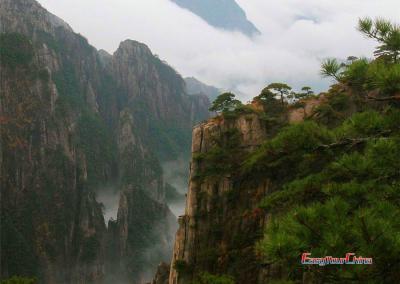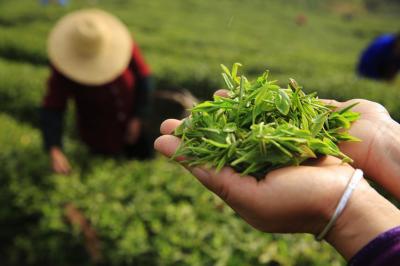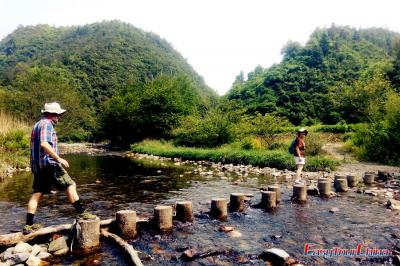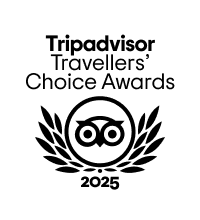Huangshan Tea Culture Tour
Overview
Delve into Chinese tea culture with authentic experience on 6 days Huangshan tea tour itinerary.
Back in East Jin Dynasty (4th century) in Huangshan area, the monks in the temples started to grow tea. In the 7th century, numerous tea pavilions were put up on the road. Tea pavilions were charity projects put up on the roads (cobbled paths) by the rich families in the nearby village. They were for people to take a rest and have a bowl of tea. Some high quality tea from Huangshan was included in the tributes to the royal families and luxury goods exports to Europe. And on this tour, you are going to learn, taste and buy some.
Tea Knowledge to learn before the trip: various teas may be from the same bush but are processed differently. For example, Maofeng Green can be processed from the same bush that Keemun (Qimen) Red is made of. And before Keemun was invented, here in Huangshan it was all green tea.
Why Huangshan: Huangshan has large heavily forested mountainous areas. This creates great soil & water plus perfect sunshine.
Request: you need to be physically in good shape, able to walk 2-3hrs non stop.
Customize Your Tour:
☑ Travel Dates ☑ Your Interests ☑ Your Travel Style
Itinerary Expand All
Drive to Qimen and visit the tea farm and processing works at a town. During market month (Apr-May) large scale tea trading happens between 13.00-15.00. Visit the Red Tea Museum. Drive Back to Huangshan city. (same hotel as previous day)
- Keemun (Qimen) Red Tea: in Chinese, black tea is called "red tea", as there is another tea called "black tea". So in order to sound like/ be a specialist, let's call black tea "red tea" now. Though Lapsang Sauchong Red Tea from Wuyi Mt is the very first Red Tea to be known by Europe, it is here in Huangshan, that Red Tea farming & making was expanded and was made available to many famiies in Europe. In 1875, Red Tea technologies and bushes were introduced from Fujian province to Huangshan. The higher profit immediately attracted local tea farmers & makers. In 1915 Keemun (Qimen) Red Tea won the gold award in the World Expo. It had become a luxury in the high end consumer market in Europe. In the new millenium, new technologies and breeds were introduced, Keemun (Qimen) Red Tea is taking on a new look and is ready to present itself as top end Red Tea in the world.
Meal: B, L
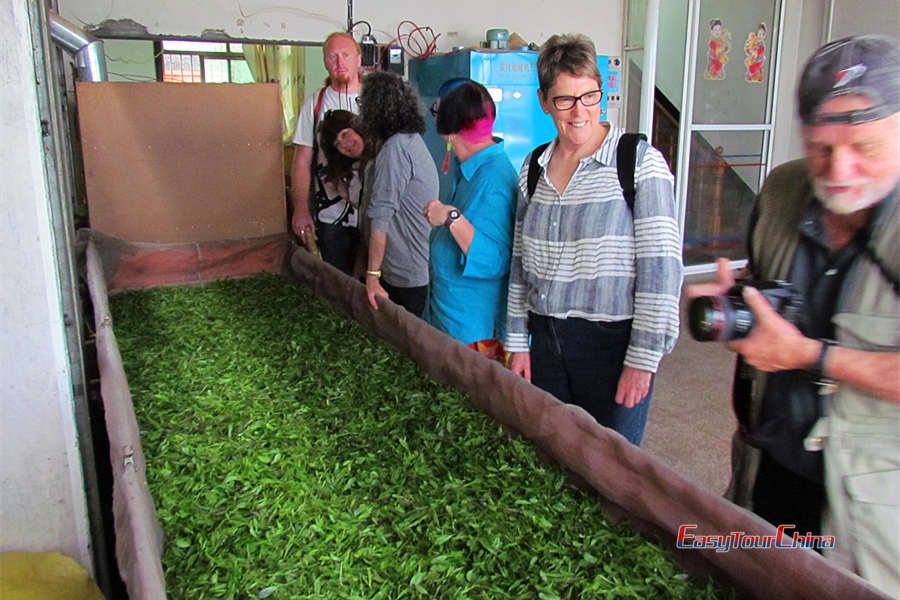
Drive to Taiping, walk to the treasure trove of Houkui Green Tea. Walk for some 2hrs to the very center village and visit a Houkui tea making family. Walk back to car and go for lunch. Afternoon go up Yellow Mt from north gate by Taiping cable. Overnight at Xihai Hotel (a Mt top hotel).
- Yellow Mountain was formed in the Mesozoic period. Made up of pink feldspar and quartz stone and eroded over the ages, grotesque forms were created. It was claimed by Xu Xiake, the most famous traveler in Chinese history, to be the only mountain people need to visit in China.
- Houkui Green Tea is a fascinating green tea, largely because of its unique shape. Many other green teas in China are small or curled. But Houkui is long and flat. The name comes from the place where it was first grown, and the person who made the best of it. At an elevation of 750m above sea level, the tea farms spread between the mountains and trees. 90% of the terrain is covered by forest, creating an ideal place for high quality green tea.
Orchid taste is the unique character of Houkui. When brewed in tall glasses (must be tall glasses), the leaves slowly expands to its original shape - two leaves supporting one bud. And the orchid fragrance goes with the vaporizing steam filling the entire room.
Price for reference: USD25 per 50 grams.
Meal: B, L
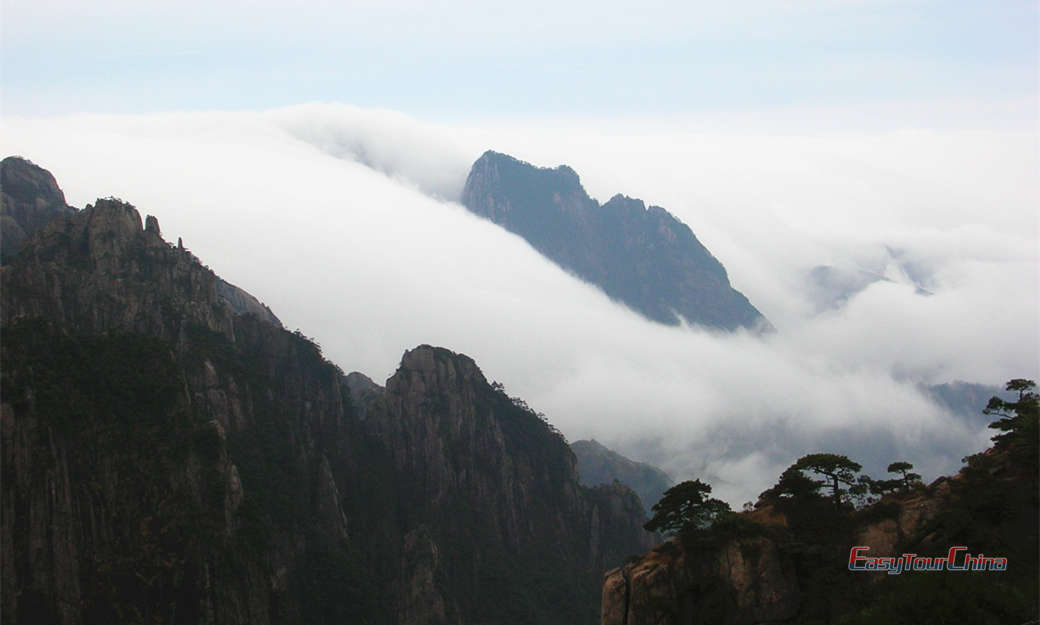
Morning walking to various viewing points on Yellow Mountain and enjoy the possible sunrise. Cable car downhill around lunch time. Drive to Maofeng Green Tea Farm to sip and experience Maofeng Green.
- Maofeng Green Tea developed from the green tea farmed in Huangshan since Tang Dynasty (618-907). Green tea farming reached a high time in the 15-16th century. Near the end of Qing Dynasty, Taiping Rebels occupied the southern part of China to overthrow the corrupted Manchu Kingdom. Huangshan was not spared from the war turmoil. A local tea merchant Mr. Xie Zheng'an moved his family back to his hometown nearby and start to expand his tea growing in the mountains. Xie added Huangshan to Maofeng to pinpoint the production area.in 1972, Maofeng Green was given as a gift together with 2 panda bears to President Nixon of USA. In 1955, Huangshan Maofeng was rated Top Ten Chinese Tea. In 1986, it was designated as the tea to be used by China Foreign Ministry to entertain foreign dignitaries and for national gifts.
Meal: B, L
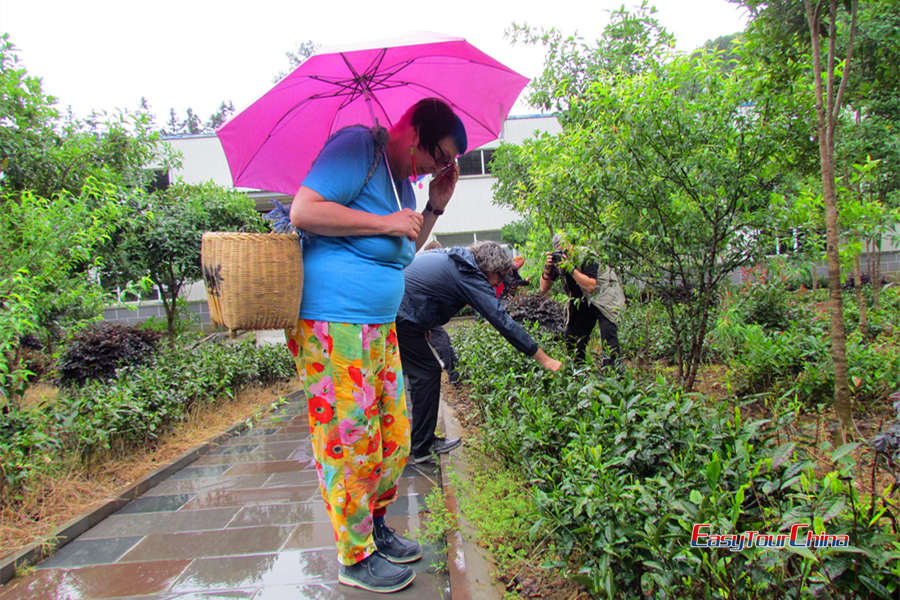
Morning go to visit the tea trading center in Huangshan. Afternoon visit Chengkan, a heritage village near Huangshan with rich histories and cultures. It is the only well preserved Ming Dynasty architecture in China, claimed by some famous writer to be "the village you have to visit in China".
Meal: B, L
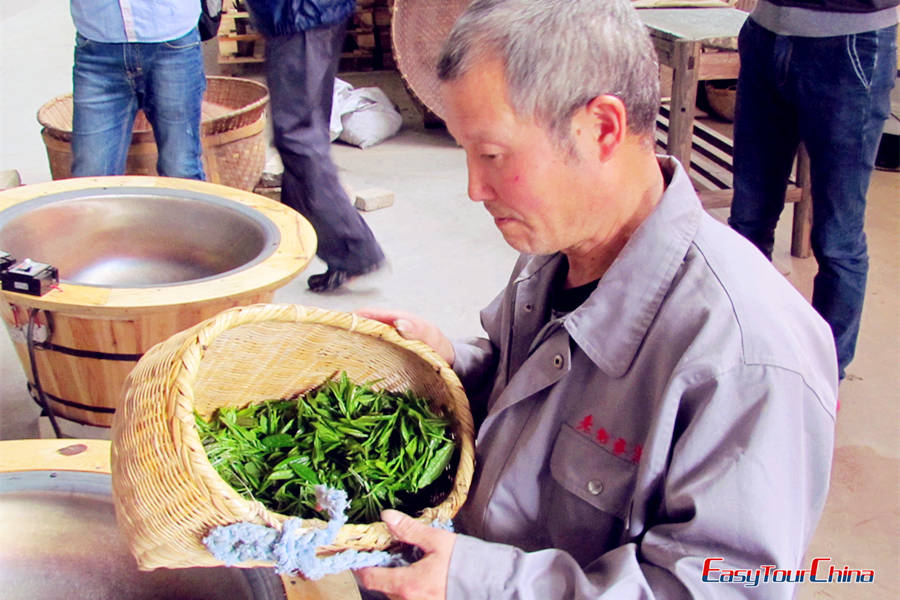
Morning incense making class. After lunch, depart Huangshan by train or flight, or extend your trip to Wuyishan (famous for Wuyi Rock Tea) for further Chinese tea tour.
- Incense making in Huangshan: Possibly started in the 4th or 5th century, incense making came from central China (Henan, Shandong) due to the large scale of migration (people fleeing from wars). Southern Song Dynasty's capital was built in Hangzhou and the easy river transportation carried more migration to this mountain enclosed area of Huangshan. Relatively stable agricutlure and economic growth brought over many Chinese herbal doctors together with their incense making traditions.
Meal: B
